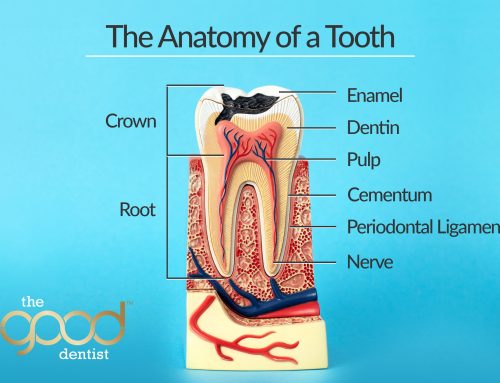Root canal is the treatment of a tooth that has become infected or damaged by extensive decay.
Also called endodontic therapy, root canal therapy removes infected material from within a damaged or dead nerve while restoring lost structure and function so that the tooth once again feels normal when you chew on it with no pain whatsoever.
However, the most often asked question is – do root canals hurt?
The actual root canal procedure does not hurt.
Understandably, some people may feel anxious with a dentist poking around their mouth with tools and needles, so let’s look at the different stages of root canal to determine if there is much pain involved.
Tooth Infection
A cavity in your tooth that goes all the way down to its root (deep decay) can cause serious pain. If left untreated for too long, this infection can spread further into your jawbone or even into other parts of your body through blood vessels that run next to the affected tooth.
This is typically the source of pain and not the procedure itself.
Ideally, as soon as you sense any pain, book an appointment to see your dentist. Numbing agents work more effectively when your tooth is not already throbbing.
Dental X-Rays
Expect your dentist to take an x-ray of your teeth to see where the infected nerve is located and get a clear understanding of any other problems with your teeth before work begins.
X-rays are painless.
Local Anaesthetic
Every case of root canal is treated individually, however, most root canal therapy doesn’t require general anaesthesia (full sedation.) Typically, local anaesthetic will suffice, meaning you’ll be awake during your appointment.
A numbing gel is placed on the gum before the local anaesthetic is injected. This doesn’t hurt. You may feel the pressure of the injection but the numbing gel dulls pain so you don’t experience a sharp sensation.
Gum or Jaw Pressure
Expect to feel pressure as the dentist explores your tooth and mouth. This is not a painful process but you may experience discomfort because there are dental tools in your mouth that are probing, scraping or suctioning.
Sometimes, you may experience hyperextension of the jaw during the procedure. This is when your mouth and lower jaw are pushed down because an instrument is being used to clean out the nerve in the tooth.
Holding your mouth open for an extended period of time will always feel somewhat awkward, however, this doesn’t hurt. Most dentists work out communication signals with you prior to the procedure so you can indicate if you are uncomfortable.
Dental Drill
Your dentist will drill a hole in your tooth, using a precison drill bit or file, to access the pulp and root. You will sense high-frequency vibrations as they remove infected tissue from inside the tooth. Expect to feel dull force and pressure but no sharp pain. You may also smell the contact of the drill with your tooth, but this doesn’t hurt, though some may find it unpleasant.
Post Treatment Pain
After root canal treatment, postoperative discomfort is occasionally experienced in the area of the affected tooth and jaw. This is due to irritation of the bone surrounding the tooth and may range from mild discomfort to occasional episodes of sharp pain. This discomfort will usually subside within two to three days.
Swallowing may also present some irritation but this will also subside.
Root Canal Offers a Safe, Successful Solution
Root canal therapy is the preferred way to save your tooth, especially in favour of an extraction. Keeping your original teeth is always best for your health. However, if the damage has gone too far, your dentist may recommend extraction.
Overall, root canal treatment is usually painless, especially if you see your dentist prior to severe pain arising from infection, but if you do experience pain during or after treatment let your dentist know immediately so they can take care of any issues and prevent further complications.







